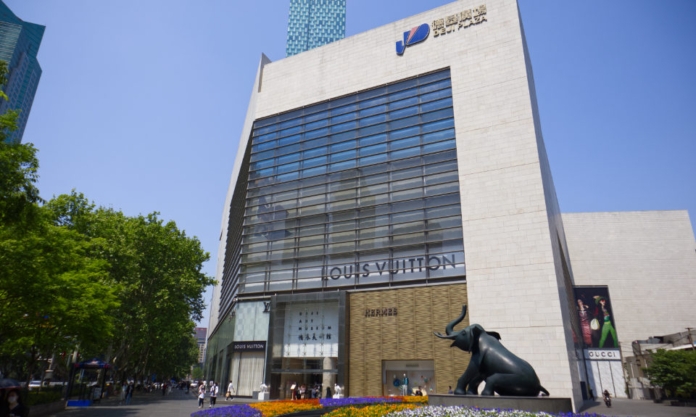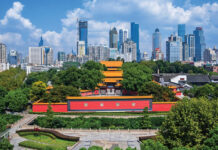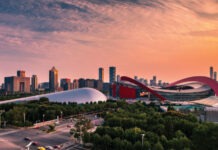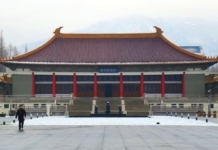Consummate shoppers among our alert readers will know all too well that China’s top-performing shopping mall is SKP (新光天地) in Beijing, with yearly sales of ¥13.5 billion. And the only other mall in China in that club with a revenue over ¥10 billion? Our very own Deji Plaza.
But why? Shanghai has a plethora of mega malls that rake in the bucks. Why Deji?
Part of it is down to the status of Nanjing in the Yangtze River Delta; more on that later. The big reason though, is the building itself. In other words, its feng shui.
Like many buildings in China, Deji chose an auspicious date (ok, one purely associated with money) to kick things off. Phase 1 of the Plaza opened on 26 June, 2006, and the cash registers started going “ka-ching”.
But long before that, the Deji Group had brought in leading international architecture and design practice, Aedas. By the time Phase 2 was complete and open on May, 2012, Deji boasted a floor area of 135,710 square metres and the Aedas vision had been realised.
With their design for a unique, high end shopping environment that would be a combination of modernity and nature, that vision was to provide a space where the flagship stores of international luxury brands could congregate. And it worked.
Bringing us back to those shoppers. Following a less-than-stellar performance by Phase 1, For Phase 2, Deji reserved two-floor flagship stores for brands such as Chanel, Cartier and Tiffany. As a result, these branches of the retail icons are superior to their stores in nearby Suzhou and Wuxi.
According to Jing Daily, home to all things luxury in China, there are three kinds of high-end shoppers in Nanjing; High Net Worth Individuals (HNWI), the rising middle classes and students.
Deji brings in those HNWIs from Nanjing of course, but also from neighbouring cities such as Ma’anshan. They come to shop and learn about luxury brands, having little in their home towns.
Nanjing is also where we find many a regional or national company headquarters, while the city’s rising middle classes work in government, finance and technology. All are fond of a trip to Deji Plaza.
And those students? In Nanjing, they are not so humble, with many attending élite high schools, knowledgeable about luxury brands and generously supported by their parents. Remember also that the student ratio in Nanjing is the highest in the country, at 10:1.
And finally, back to the Feng Shui that lies in the heart of Deji Plaza. The Aedas website claims that they “create world-class design solutions with deep social and cultural understanding of the communities we design for”. It’s an assertion borne out in the DNA of Deji.
Both Phase 1 and Phase 2 of Deji Plaza have their axis orientated on a slight diagonal away from the main complex’s north-south alignment along Zhongshan Lu. And in both cases, that axis points directly at Xinjiekou Square itself and in particular, the statue of Dr. Sun Yat-sen.
With the Republican era in China the very épitomé of cool, such associations with the man who led that revolution here in Nanjing have turned out to be auspicious indeed for Deji Plaza.












